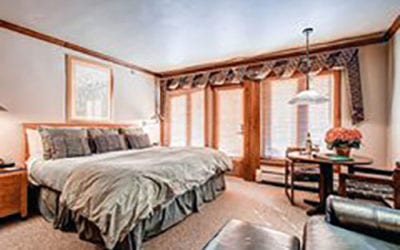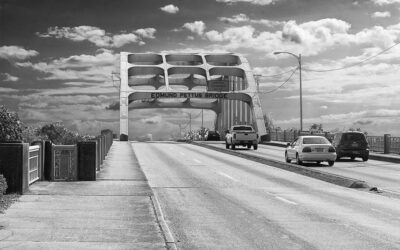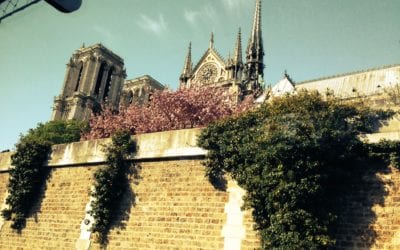“The slower you walk, the sooner you’ll get there.” Those words, uttered by Wolfgang Wippler as I followed him up a mountainside trail in Austria, seemed to make little sense.
It wasn’t long, though, before their truth became evident. First, I began to pant due to exertion and the thin air at 7,500 feet above sea level. Next to go were my legs, increasingly grateful for the near snail-like pace. As we caught and then passed a younger couple who had begun the climb minutes before us at a faster gait, I was ready to concede the wisdom of my guide’s tortoise-and-hare approach to walking on a mountain.
That was my introduction to hiking in the Tyrolean Alps, the sheer peaks that rise sharply from green-carpeted valleys in the western panhandle of Austria between Germany and Italy. If mention of Austria conjures up images of tiny villages of flower-bedecked chalets, cows and sheep grazing on hillsides so steep you wonder how they can stand, and people who cling proudly to their colorful traditions, you’re probably picturing the Tyrol.

Vienna is aptly famous for its architectural treasures, musical riches, atmospheric coffeehouses and sinfully tempting, artery-clogging, whipped cream-covered desserts. Other Austrian cities and regions also make their claims to fame. But the craggy mountains, lush alpine meadows and gentle valleys dotted by toy-like villages that characterize the Tyrol have a unique magic of their own.
Innsbruck, the historic capital of the Tyrol since 1420, is a good place to begin an exploration of the region. Nestled along the River Inn between parallel mountain ranges, the city became the seat of the powerful Hapsburg imperial court under Emperor Maximilian I from 1490 to1519.
Maria-Theresien-Strasse is a broad boulevard that leads to a market square which is the center of the Old Town. There, cobblestone streets are lined by elegant multi-story 15th and 16th century houses, the town hall tower and onion-shaped cathedral domes. Some of the Renaissance and Baroque buildings today house cafes and souvenir shops, but even those nods in the direction of modern commercialism can’t hide their graceful facades.
The most famous and photographed highlight is the Goldenes Dachl (Golden Roof), a graceful third-story balcony built in 1420 onto what became Emperor Maximilian’s Innsbruck residence. Covered by more than 2,600 gilded copper tiles, it served as a royal box from which to view tournaments and festivities in the square below.
Along with its architectural riches, museums and other treasures, Innsbruck provides a perfect home base for excursions into the surrounding countryside. While I chose to explore by means of driving day trips, an equally inviting alternative is to overnight at one or more of the small towns, including 25 “holiday villages” that surround the city of 120,000 residents.
Village accommodations include hotels, bed-and-breakfast facilities and farmhouses that welcome guests. Driving throughout the compact region is easy, on well-paved and clearly marked roads. An alternative is the public transportation system, which includes postal buses, trains and cable cars that provide easy and inexpensive access throughout the area.
![Village of Patsch[1]](http://consumertraveler.com/wp-content/uploads/Village-of-Patsch1.jpg)
Ubiquitous roadside crosses and religious paintings adorning the sides of many buildings are among tangible signs of strong Catholic influence. More enticing to me were lovely miniature places of worship, often built and used by several neighbors. Many of these tiny chapels, most with only four to eight narrow pews, were constructed during times of plague, as convenient places at which to pray for health and for the souls of the dead. Today, they are used primarily for local funeral services.
Delving more deeply into the essence of each village, I began to discern subtle yet intriguing differences. Seefield, a town of about 4,000 residents, is only a 15-minute ride outside Innsbruck up a winding, hilly road. Although it is one of the more touristy villages, it doesn’t present a crowded feeling in summer. Of special interest is the Baroque Seekirchl Church, with its eight little pews.

Little Lans is known for several outstanding restaurants, and for a privately owned lake area where locals gather to swim, sun and socialize.
Gasse is easy to miss. Home to only about three dozen families, it offers a miniature introduction to some of the lifestyle attractions that visitors to the Tyrol find so appealing.
These include mailbox-like structures in front of some homes that are used by residents to deposit a note with their order for fresh bread, which the local baker leaves the next morning.
Little huts clinging near mountaintops, I learned, serve as temporary homes for men who summer there while tending the community’s cows, sheep and goats that graze on the steep slopes.
I can still picture the tiny chapels, which I found as moving and marvelous in their way as the most elaborate cathedral.
Whenever I hike in the future, even near my home, I will conjur up these and other images of the Tyrolean area of Austria in all of its beauty. I’ll also remember and abide by Wolfgang Wippler’s wise words of advice.

After gallivanting throughout the United States and to more than 75 other countries around the world, and writing about what he sees, does and learns, Victor Block retains the travel bug. He firmly believes that travel is the best possible education, and claims he still has a lot to learn. He loves to explore new destinations and cultures, and his stories about them have won a number of writing awards.

![Reconverted Farmhouses in Mutters[1]](http://consumertraveler.com/wp-content/uploads/Reconverted-Farmhouses-in-Mutters1.jpg)


